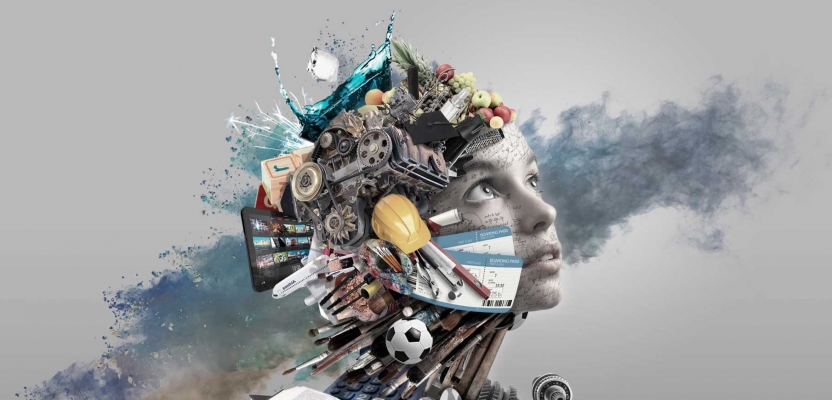Your Mindset creates your reality. Time to take control!

This year (2020) has been a year unlike any I’ve ever experienced in my many years on this planet! In Australia – the land of contrasts – we’ve had floods and drought in the back end of 2019, the Black Summer of bushfires from June last year through to now and of course a pandemic from February. Without intending to diminish the impact all of these disasters have had on people, communities, wildlife and business, there are positive outcomes as well. We’ve drawn closer and cared for each other, watching out to make sure our vulnerable people are OK. We’ve smiled more at people we don’t know. We’ve shared resources, creativity and humour. We haven’t let self-isolation or lockdown impact self-expression and the arts. People have come together online to share music, ballet, live readings of plays. My heart soars when I see how our human spirit has found ways to reach out and touch each others’ lives in love and support. There’s no doubt we’re experiencing a watershed moment. Everything we’ve held as constant is thrown up in the air for re-evaluation. We can more easily replace what’s not functioning effectively with new, creative ways of working, interacting, loving and living. Many of us have been asking soul searching questions. Am I happy? Do I find meaning and fulfillment in what’s around me at the moment? Am I spending enough time with people who are important to me? Those kinds of questions. Questions are emerging around our work choices, whether we’re doing what really lights us up, how to resolve the fair or unfair division of labour in the home. We’re questioning the role business plays in society and its responsibility to give as well as take – genuinely give, not token giving as a marketing tactic. Pre-pandemic, we saw Purpose adopted – and I use that word purposefully – into business. Now we’re seeing more conversations about Purpose needing to guide and align every aspect of business. As an inspiring purpose becomes the organising principle in business, brought alive in every decision and daily action, we’re going to see bigger changes. I believe women have a major role to play in the changing face of business. The ‘feminine’ values of ensuring wellbeing, inclusion and belonging, empathy, resilience, consultation and collaboration are finally being recognised as pathways to the more measurable business drivers. Research has shown that more women at senior levels significantly impacts bottom line, Return on Investment and Return on Equity as examples. For more women to step up, we need to deeply understand the value we bring, to let go of perfection, to recognise opportunities and feel confident to go for them. It all starts with mindset. And mindset accounts for 85% of our success in any endeavor. We may have an exciting vision, aligned goals, the willingness to put in lots of hard work and to persist in the face of challenges. Which is positive, right? But it’s not enough. If your mindset doesn’t support you, you will not achieve the vision in the same way that you could if your mindset was there 100% behind you. To help more women and those with a naturally feminine approach to take advantage of this watershed moment, I put together a series of seven videos. One will be released each week. Today, the first video takes a look at mindset and why it’s so powerful. Subsequent videos explore how we create our mindset, identifying whether our mindset supports us or not, exploring how we can change our mindset if it is not 100% behind us, how we can embed those changes and integrate them back into the workplace or any other life context. Mindset consists of the values, beliefs and attitudes we hold, formed as a result of our life experiences and the way that we’ve interpreted the reality around us. Once a mindset pattern is triggered by an external situation, it drives our behaviour, and therefore the outcomes that we achieve. In the process of creating our mindset, we essentially eliminate most of what we’re exposed to. Typically, our mindset is unconscious and we’re unaware of the process that created it. Two things arise from that position. We think we understand what reality is when, in truth, we haven’t a clue what’s going on. It’s important to recognize that we don’t see reality as it really is because nobody can. And I’ll explain that in the second video. We think that our mindset is concrete. It’s set in stone. We can’t change it. We now know how powerful our mindset is and how a change in understanding can alter our bodies, improve our performance and set us up for success or failure. My first experience of the power of Mindset was reading ‘The Inner Game of Tennis’ (1974) in my advertising days. The book was about the mental side of peak performance and essentially proposed that the game was won or lost before the players ever got onto the court. Since then, there has been so much scientific research and literature supporting the power of our mind. Norman Doidge talks of ‘The Brain that Changes itself’ introducing the concept of neuroplasticity where in the face of brain damage, peoples’ brains rewired functionality to operate as a whole brain replacing the damaged parts. Bruce Lipton shares the “The Biology of Belief’. He talks of the relatively new field of epigenetic where scientists are now ratifying the power of our interpretation of the external world – based on our beliefs – to impact our health and wellbeing. In her TEDx presentation “Change your Mindset, Change the Game”, Dr. Alia Crum discussed a personal experience of the power of mindset and 3 scientific studies demonstrating that power: The increased pain relief after thoracic surgery when a doctor delivered the morphine instead of the timed release via computer. The decrease in body weight, body fat and increase in energy and wellbeing experienced amongst the test group of hotel room attendants simply as a result of being told they were experiencing the daily requirement of exercise to
When is a decision REALLY a decision?

It seemed like such a good idea at the time. Efficient and relatively easy! Just hop on the train at Milsons Point Station, change at Central and up the escalator to the domestic check-in. I missed the first train from Milsons Point which meant I could miss my connection and possibly my plane. Changing trains at Central, I took a short-cut to reach a different platform, got lost and wound up running up the stairs, suitcase in hand. 3 steps from the top I could see the train was about to leave. I screamed for the conductor to wait for me. With an extra burst of speed I reached the platform. The conductor ignored me. The doors were beginning to close. I threw my suitcase into the space between the closing doors. The audience of almost a dozen fellow travellers started at me as I fell into the carriage. “I couldn’t miss my plane!” I made it! In conversation with a friend later that day, I realised I had experienced an unwavering decision: I was going to get on that train. There was no question in my mind! No second-guessing. No concern about what others might think of me. No fear of rejection. I was totally in the moment and failure was not an option. I then recognised the difference between that decision and some I had made in other areas of my life. I thought I was committed. I wasn’t. There was still some lingering doubt about whether I wanted the outcome or thought I deserved the outcome. What did it take for me to make and carry through such a ‘do or die’ decision? A whole-brain decision – including my intuition. I thin-sliced the situation and decided in a split second that I could achieve my outcome The consequences of not succeeding were something I wasn’t prepared to live with The possibility of failure was not an option I had a clear plan of action I had complete trust in my ability to carry through the plan And I was determined to make it happen Everything came together in the split second I made the decision. It reminds me of the well-known riddle:Question: In a bacon-and-egg breakfast, what’s the difference between the Chicken and the Pig?Answer: The Chicken is involved, but the Pig is committed! We use the word ‘decision’ lightly. The question is, have we really decided? Have we really come to a resolution? Now I recall what that total commitment to a decision feels like, I have the opportunity to evaluate other decisions I thought I had made to see how they measure up. What about you? Do you have 100% commitment to your important decisions? Your results will let you know.
7 ways to move beyond ‘Nice Girl’ to Thought Leader

I was raised to be a nice girl, to be seen and not heard, to do what I was told to do and not what the adults in my life did. I was taught that if I couldn’t say something nice, I shouldn’t say anything at all. It was important that I didn’t offend anyone. As a result of all that conditioning, my tendency has been to avoid conflict or confrontation of any kind. Imagine my dilemma when I found out many years ago that to be of any real value as a thought leader (speaker, trainer, author …) I needed to challenge their thinking; to poke and stir up thoughts; to offer choice. Being agreeable maintains the status quo. It validates people where they are and takes away their growth opportunity. Almost as important, without being disruptive in my unique way, I can’t stand out from the crowd and it’s less likely I’ll be commercially successful. What a journey it’s been to shift from the nice agreeable girl to embrace my spikey. Yes, it was there buried beneath the patina of socially appropriate behaviour. What did it take for me to make that shift? Here are 7 steps in that journey that can help you do the same: 1. Believe we add value So many of us either don’t see our talents and capabilities or fail to recognise their value. Without claiming this critical part of ourselves, we can’t make our contribution. Without recognising our value, we feel we have nothing to offer that can add to another person’s perspective. I’ve used the word believe purposefully. When I first started out in my own business, I had beautiful marketing materials that I never used. I realised they were developed from other people’s feedback and I wasn’t buying it. I needed to recognise my strengths and successes, understand the benefits they provided to others and feel that it was OK to say I’m good at this. I needed to own and embody my value. I needed to believe in me before I could expect others to. Equally, I needed to let go of being a generalist. In the early days of a speaking or training career, many of us look at other people’s success and think “I can do that” and we incorporate that capability into our offering. That old saying “If we don’t stand for something, we fall for everything” comes to mind. We need to draw our line in the sand and tell the world (or at least the niche we’re after) that this is what we stand for; this is what we offer and we’re damned good at it! Then we are in a position to offer value. 2. Listen to – then transform – the critical voice inside We all have a critical voice. Some are less critical. Some are loud while others are a mere whisper. It’s there and it is providing a running commentary on how we’re doing according to our internal filters. If we believe we’re good enough, that we have a right to be here and have a valuable contribution to make, our internal voice will be reinforcing those positive messages. If we sometimes (or often) question our worthiness, the value we bring and what we deserve in this life, our critical internal voice will reflect those filters. Whatever way we think will influence how we show up. That critical voice is simply providing us with information on how we really think about ourselves and the world around us. Given those beliefs are deep-seated, our critical voice is helpful in surfacing those beliefs so we can challenge the value they bring in our current situations and in relation to our dreams. Do they support or undermine our best efforts? We can be grateful for the voice and the information it provides … then choose to do what we need to. This is where courage comes in. We can’t make our unique contribution – in this case add another perspective so our clients can make wiser choices – unless we move past that critical voice that would have us play small to keep us safe. 3. Ensure the message is clear Yes, receiving feedback can be challenging. Giving it can also be hard, particularly if you’ve grown up with a credo of not offending anyone. I used to get so frustrated when I found the courage to provide my opinion and then it wasn’t understood. I realised that the nice way I wrapped up what I was trying to say obscured the message. If I wanted to get my message across, I had to peel back the niceness to reveal its core. If your tendency is to wrap the feedback up to make it more palatable, ensure that you haven’t buried the nugget so deeply it gets lost. 4. Focus on intent This starts with a personal question. Why am I giving this person feedback? ‘Is it kind, is it necessary?’ is a phrase I was taught years ago. Am I providing the disruption to demonstrate just how clever I am or am I truly seeking to be of service to the other person. Where it’s the latter, the desire comes through as part of the communication. If not, my ego seeking validation will be heard instead and that can set up an icky energy. Feedback is a gift. We often can’t see what’s going on in front of our noses; feedback is essential to expose and resolve our blindspots which are often the parts of ourselves that stand in our way. As thought leaders, we can be the light. So, to the second question: ‘Will it help the other person to hear what I could share? Is what I’m about to say the next natural step for that person for him/her to progress?’ Articulating the disruption, communication, feedback, seeking to resolve a conflict or enforce a boundary, however, can be difficult. I got to the point where I realised my clumsy
Is it time to get out of your own way?

I get in my own way. There I’ve said it. I’ve unintentionally undermined my own opportunities through self-doubt, procrastination, distraction. active sabotage and various other techniques I’ve perfected over the years. It’s a strange expression isn’t it. How can I get in my own way? I’m right here in this body. I can’t be in two places at once! That’s true. What’s also true is that we have amazingly powerful minds. I can see a situation play out : it feels real. I’m there in a flash. I don’t even go through the stages any more. I skip straight to the proverbial last page. The scenario is usually fear based. I’d better not do XYZ because I know how it turns out. While other people may push through in spite of the fear, my response – and that of a majority of women and some men – is then to pull back. I have, in the past, totally tripped myself up. I allowed an imagined situation to play out with disastrous consequences and then I acted as if it was real. I stepped back from opportunities I logically knew I could handle. I believed what others told me, giving their opinions greater validity than my own intuition. I allowed others to define who I am. At various stages in my life, I took everything personally as though all the challenges in the universe were put there just for me to deal with while others got a much easier ride (or so I thought). I said yes to situations I really didn’t want to get involved with and then resented the other person for asking. I kept my ‘little Spanish girl’ (the opposite to English and stitched up) firmly locked up, rarely allowing her to come out and tell it like it is, stamp her feet in temper, dance like crazy and live a passionate life. I could go on … and I think you get the picture. I lived a much smaller life than I could have if I had dared more; if I had got out of my own way. My prevailing view through so much of my life was – and I say it consciously – I wasn’t good enough. I didn’t measure up to other people and to their positively distorted views of me. In my darkest moments, I would rail at the universe demanding to know when I would be enough. The answer wasn’t out there. I finally realised I was creating everything: the good, the bad and the ugly. I created my own reality. And I was interpreting the world through a pair of glasses that eliminated all evidence that I actually was good enough. Each of us has an amazing and unique combination of talents, skills, capabilities and qualities. No-one else can do what we do in the way we do it. And when we take responsibility for the whole of our reality, we can operate – consciously at first – from the space of who we are, not the material outcomes we want from life. Getting out of our own way is a journey to ourselves; a journey of acceptance for all the gifts and the imperfections we bring. Yes, the journey can be challenging. Realising we’ve been undermining our own opportunities, hopes and dreams can feel extremely uncomfortable. Doing the work that helps us identify the blueprint we have for life and rewiring it can feel liberating. So, do you sabotage yourself? How do you get in your own way? And what has it cost you? Do you remember – or have you ever heard of – the movie Network? Peter Finch played the role of a washed up anchor on a fictional tv station, UBS, during the depression. From the movie, there are two lines that became an anthem for people feeling helpless and frustrated with the way things were. It’s the catch cry for change. “I’m mad as hell and I’m not going to take this any more!” If you’re tired of sabotaging yourself and living a smaller life than you could if you believed in yourself and felt you are good enough; if you have a dream you’re not getting any closer to, maybe you are mad enough to make the change? The path to getting out of your own way involves recognising you are enough, there is enough and you have enough to do what you need and want to in order to experience life at its fullest. The journey includes reclaiming and valuing you, recognising and challenging your patterned thinking and beliefs where they undermine you, rewiring your neurology to develop greater resilience and optimism, taking full responsibility for the world you have created and can create, even if you don’t fully understand what that means yet. The journey involves a commitment to you and participation in the greatest change programme there is – changing your mind about yourself! If you’re mad as hell that you’ve denied who you are, that you’ve held yourself back and finally you’ve had enough, it may be time to get out of your own way. Visit my website and my February/March public programme Skirting Leadership or Open to Possibilities.
